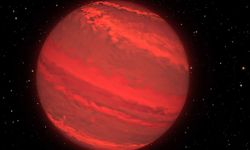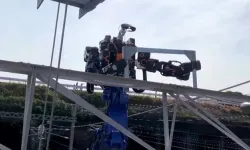The European Organization for Nuclear Research (CERN) is launching a project that researchers say could help them discover the hidden ghost particles that make up the fabric of the universe.
Scientists working at the world's largest particle accelerator are excited to have a new tool to help them explore the universe.
CERN has started building a new supercollider called the "Circular Collider of the Future", which is a thousand times more sensitive to hidden particles, also known as "ghost particles", than the devices the organization already operates.
Super colliders allow scientists to recreate the conditions of the Big Bang, the physical theory that explains how the Universe initially expanded.
The new device will smash particles against a hard surface instead of smashing them against each other, the technique scientists currently use to understand why the Universe formed.
SHiP - Search for Hidden Particles Project
The collider is part of CERN's Search for Hidden Particles Project (SHiP), a 10-year project that will study some of the weakest particles in space.
Dr. Richard Jacobsson, a senior physicist at CERN, said this project could be a "major breakthrough" that redefines the way scientists think about the creation of the universe.
"SHiP is one of those potentially paradigm-shifting experiments that could lead us to a whole new way of knowing not only about our universe, but also about our position in it," Jacobsson said.
"Much of what we have assumed so far may actually be quite different," Jacobsson said, adding that scientists have never before succeeded in detecting such particles because they lacked the right technology to do so.
What are ghost particles?
According to Richardson, everything we can see with the naked eye from space, including stars and planets, makes up about five percent of the real matter in the universe.
The other 95 percent is so far roughly split between 26 percent dark matter and 69 percent dark energy.
Scientists use the Standard Model, which recognizes 17 different particles, to explain what the universe is made of.
In 2012, CERN scientists discovered a new Standard Model particle called the Higgs Boson at the Large Hadron Collider. This discovery won them the Nobel Prize in Physics a year later.
Since then, using the same collider, scientists have failed to measure hidden particles that are likely to make up dark matter and dark energy, but are not part of the Standard Model.
"The idea for this project came together almost by accident with people from different fields who wanted to explore physics from another angle," Jacobsson said, adding that the discovery of the Higgs Boson filled a gap without predicting anything new.
"Hidden" or ghost particles are invisible and have weaker connections than particles that scientists have already discovered, making them difficult to detect. According to Jacobsson, these particles could make up part or the rest of the universe.
At the Large Hadron Collider at CERN, the new particles can be detected up to one meter away from the collision site, but the hidden particles remain invisible for much longer before they reveal themselves.
Therefore, the detectors in the new collider for the SHiP project will be placed farther away, producing more collisions against a stable background as a way to finally identify these particles.
The SHiP project will work alongside other CERN experiments, including the Large Hadron Collider. Construction of SHiP's new underground facilities will begin in 2026, with the first experiments taking place around 2032. The Future Circular Collider will start in the mid-2040s but will not reach its full potential until 2070, the BBC reports.















